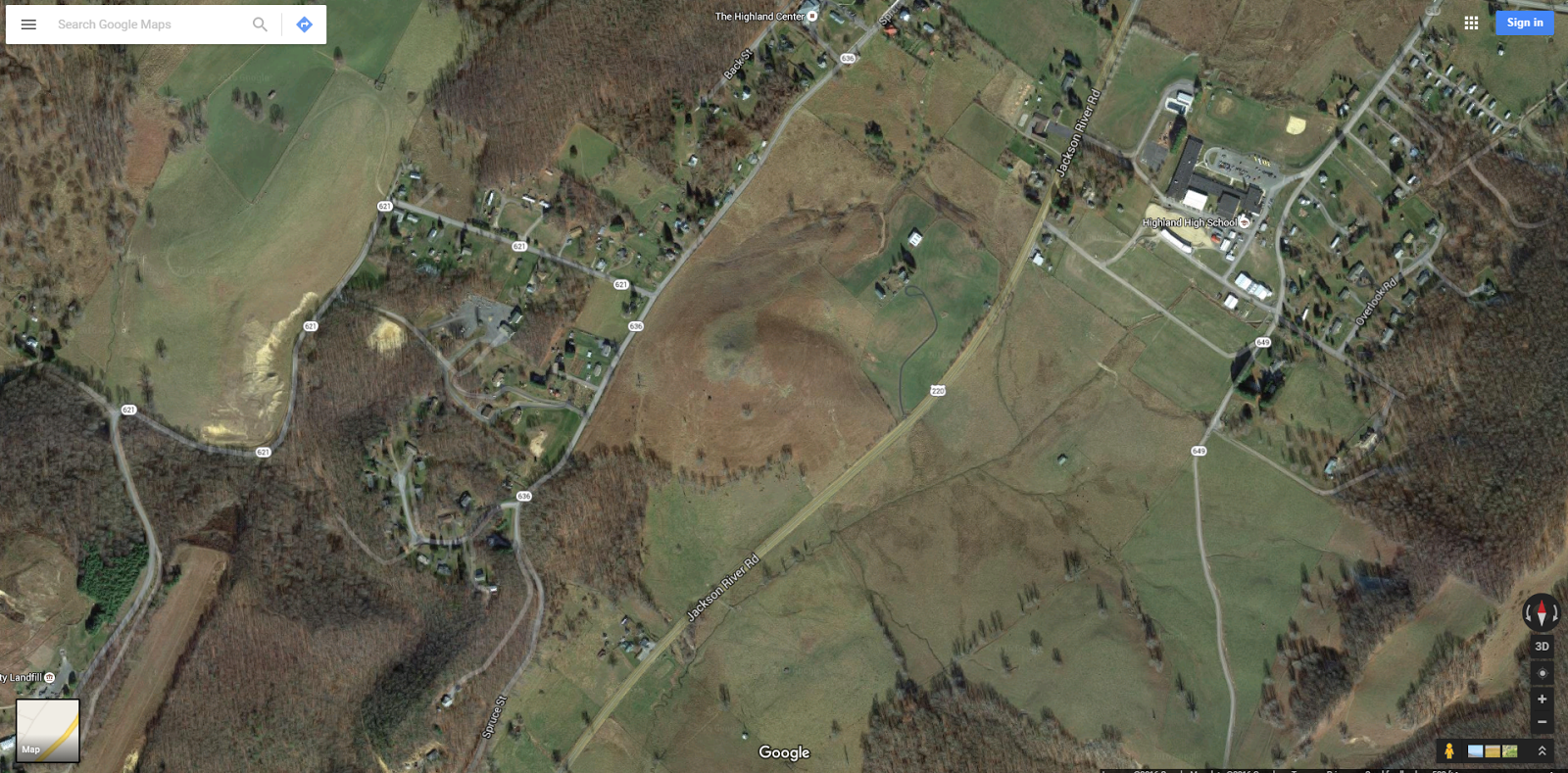
The mound you see here is Mole Hill in Northern Virginia, a bit over an hour away from Thomas Jefferson’s Monticello. 48 million years ago it was a volcano.
It has obviously worn down quite a bit since then, but the geological processes that gave it birth are still active. The Journal of Geophysical Research released results of a study that found parts of the mantle below this region are peeling off, weakening and destabilizing the crust above. This is what set off the 2011 earthquake that rattled Washington, DC and a good chunk of the Southeastern U.S.
The area sits close to the middle of the North American plate and because of that it’s normally stable. But the evidence revealed by the study suggests the mantle erosion is continuing and will eventually produce more earthquakes. No timetable on that – it might not even happen in our lifetimes.
But the slow grind of plates and the interaction of mantle and crust will continue, and as sometimes happens in these things, can open up fissures that allow hot magma to rise to the surface – giving birth to a new volcano.
Scientific American summarizes the history of east coast volcanoes, presented as detective story that takes you through time and shifting landscapes.
http://www.scientificamerican.com/article/recent-east-coast-volcano/
There are two extinct volcanoes in Virginia. Mole Hill is one; Trimble Knob is the other.
Trimble Knob
https://en.wikipedia.org/wiki/Trimble_Knob
Drive-by video of Trimble Knob
https://www.youtube.com/watch?v=TQm8mvBXvPI
Overhead view of Trimble Knob
